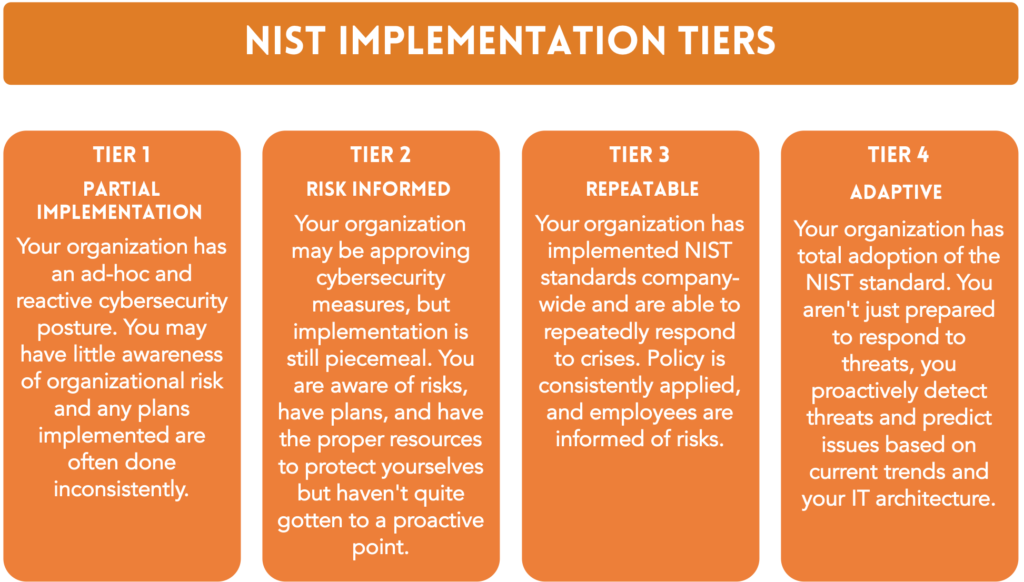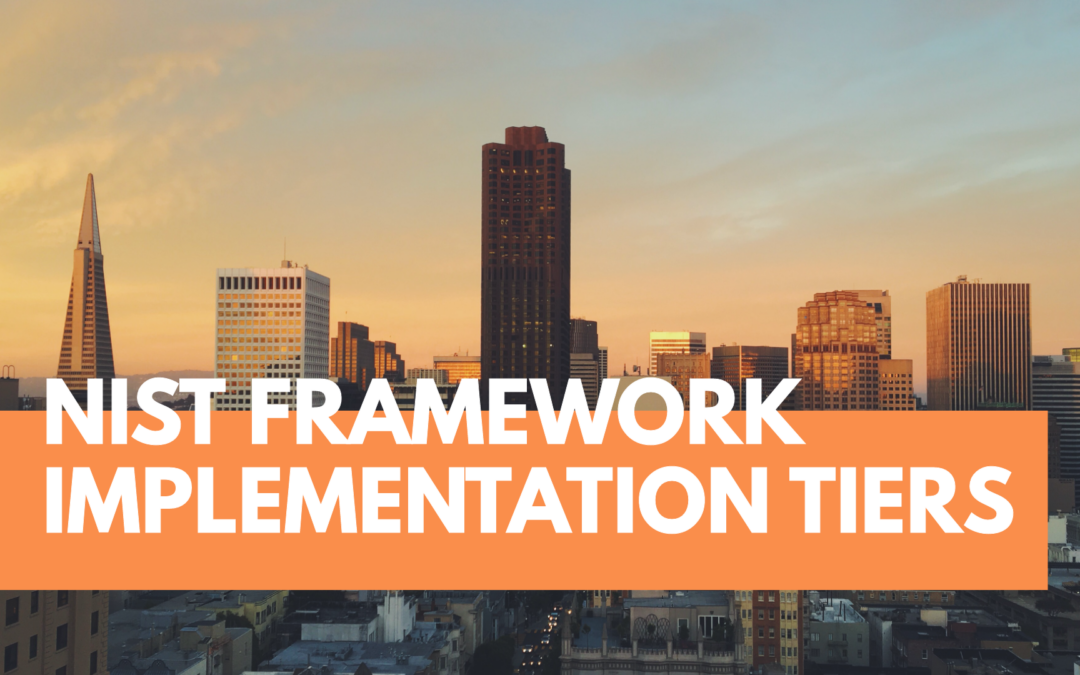We recently covered the NIST Cybersecurity Framework, a set of guidelines for small and large businesses to better understand, manage, and reduce their cybersecurity risk. While this framework should be helpful to your business, understanding it can be a daunting task. So, we have decided to break it down for you, starting with the NIST Cybersecurity Framework Implementation Tiers.
NIST consists of three main components: Implementation Tiers, Framework Core, and Profiles. In this blog post we will cover the four NIST Framework Implementation Tiers; each of which describes the degree to which your organization’s cybersecurity risk management practices align to the characteristics defined in the framework.

The higher tiers are considered more complete implementation of NIST’s standards, representing a higher degree of maturity in the management of cybersecurity risks for your business.
If you are looking to implement the NIST Framework, you must first understand where your company’s cybersecurity practices lie and decide which tier that you want to achieve based on your acceptable risk levels and available resources.
At Port53, our cybersecurity experts will work to conduct a risk assessment and help your organization implement the NIST Cybersecurity Framework in a controlled and achievable manner. Our deep relationships and expertise with best of breed technologies mean that we offer the most effective solutions, expertly deployed at a rate of investment small businesses can afford.
Contact us to learn more about how we can help your organization understand where you lie and how we can help you achieve a proactive and integrated security stack.


Recent Comments